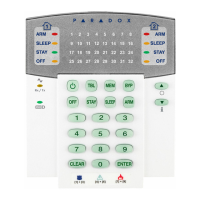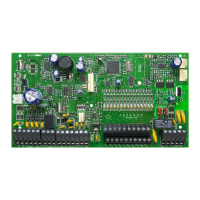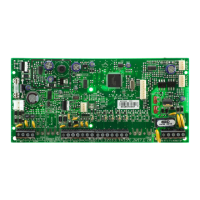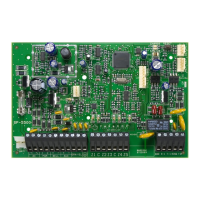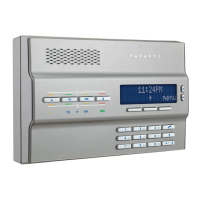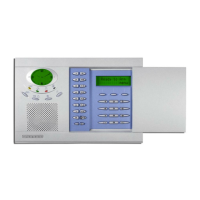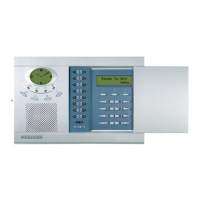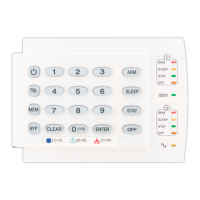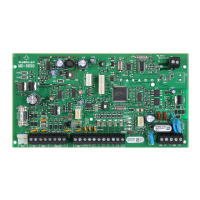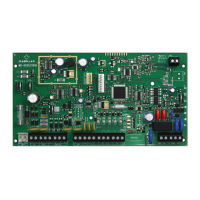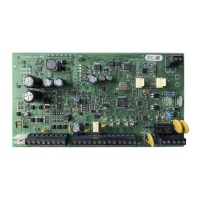Do you have a question about the Paradox Magellan MG5075 and is the answer not in the manual?
Set up user profiles, including master codes and user numbers for system access.
Define zone types, bypass, stay, sleep, and delay settings for each zone.
Steps to add, modify, or delete user codes for system access and programming.
Procedure for removing existing user codes from the system.
Guide on how to set the system's current time and date for accurate logging.
Instructions for enabling audible notifications for specific zones.
Steps to disable chime notifications for selected zones.
How to view and interpret system trouble conditions indicated on the keypad.
Understanding keypad beeps, light indicators, and muting options.
Adjusting keypad backlight and enabling power save mode.
Details on visual and auditory feedback from REM2/REM25 remote controls.
How to enable or disable the StayD mode for continuous protection.
Procedures for switching between Stay, Sleep, and Full arming modes.
Standard method to arm the system for full security.
Arming modes for perimeter protection and internal movement.
How to temporarily exclude zones from arming.
Arming the system without a user code using specific key presses.
Accessing bypass programming via a single key press.
Setting the system to automatically arm at a specified time.
System arms automatically if no activity is detected for a set period.
How alarms are displayed and stored in the system's memory.
Procedures to disarm the system and cancel active alarms.
How to trigger and handle panic and fire alarms.
Using the IP150 for remote system monitoring and control via the internet.
Setting up the system to send SMS notifications for events.
How to arm/disarm and control the system via SMS commands.
Using the VDMP3 to call and control the system remotely via phone.
Using PGMs for custom automation and control functions.
Dividing the system into two distinct partitions for separate control.
Accessing specific system functions or reports via key combinations.
Summary of zone descriptions, special keys, and system timers.
Notes on PGMs, utility keys, and GSM module phone numbers.
Set up user profiles, including master codes and user numbers for system access.
Define zone types, bypass, stay, sleep, and delay settings for each zone.
Steps to add, modify, or delete user codes for system access and programming.
Procedure for removing existing user codes from the system.
Guide on how to set the system's current time and date for accurate logging.
Instructions for enabling audible notifications for specific zones.
Steps to disable chime notifications for selected zones.
How to view and interpret system trouble conditions indicated on the keypad.
Understanding keypad beeps, light indicators, and muting options.
Adjusting keypad backlight and enabling power save mode.
Details on visual and auditory feedback from REM2/REM25 remote controls.
How to enable or disable the StayD mode for continuous protection.
Procedures for switching between Stay, Sleep, and Full arming modes.
Standard method to arm the system for full security.
Arming modes for perimeter protection and internal movement.
How to temporarily exclude zones from arming.
Arming the system without a user code using specific key presses.
Accessing bypass programming via a single key press.
Setting the system to automatically arm at a specified time.
System arms automatically if no activity is detected for a set period.
How alarms are displayed and stored in the system's memory.
Procedures to disarm the system and cancel active alarms.
How to trigger and handle panic and fire alarms.
Using the IP150 for remote system monitoring and control via the internet.
Setting up the system to send SMS notifications for events.
How to arm/disarm and control the system via SMS commands.
Using the VDMP3 to call and control the system remotely via phone.
Using PGMs for custom automation and control functions.
Dividing the system into two distinct partitions for separate control.
Accessing specific system functions or reports via key combinations.
Summary of zone descriptions, special keys, and system timers.
Notes on PGMs, utility keys, and GSM module phone numbers.
| Compatibility | Paradox Wireless Devices |
|---|---|
| Frequency | 433 MHz |
| Zones | Up to 32 zones |
| Partitions | 2 |
| StayD Mode | Yes |
| System Type | Hybrid |
| Wireless Keypads | Up to 8 |
| Wireless Sirens | Up to 8 |
| Remote Controls | Up to 32 |
| Communication | GSM, IP, PSTN (Optional modules) |
| Wired Zones | 8 |
| Wireless Zones | 32 |
| Battery Backup | 7Ah |
| Users | Up to 32 users |
